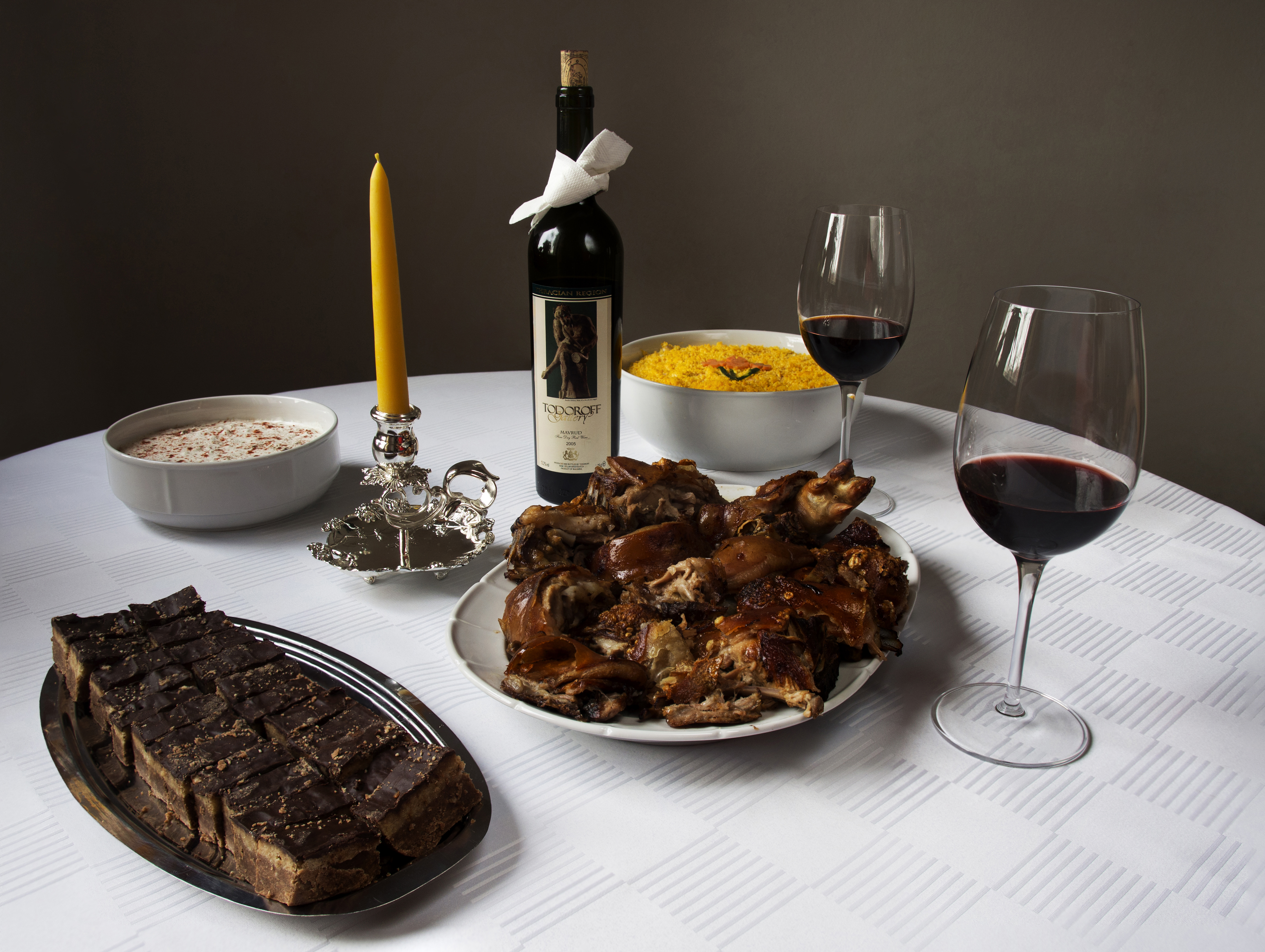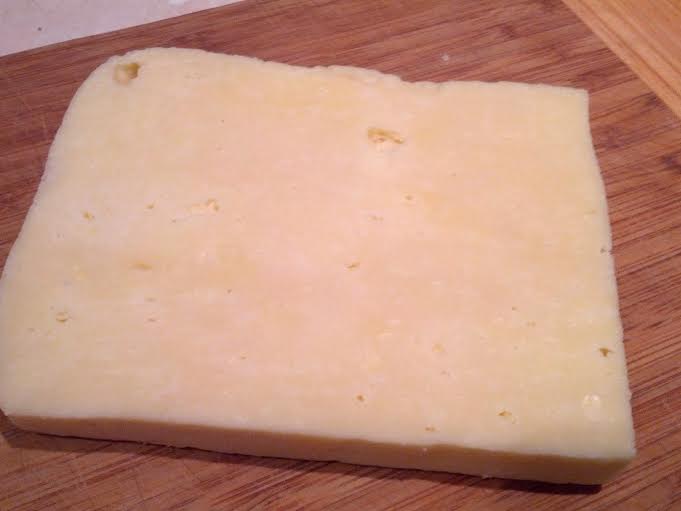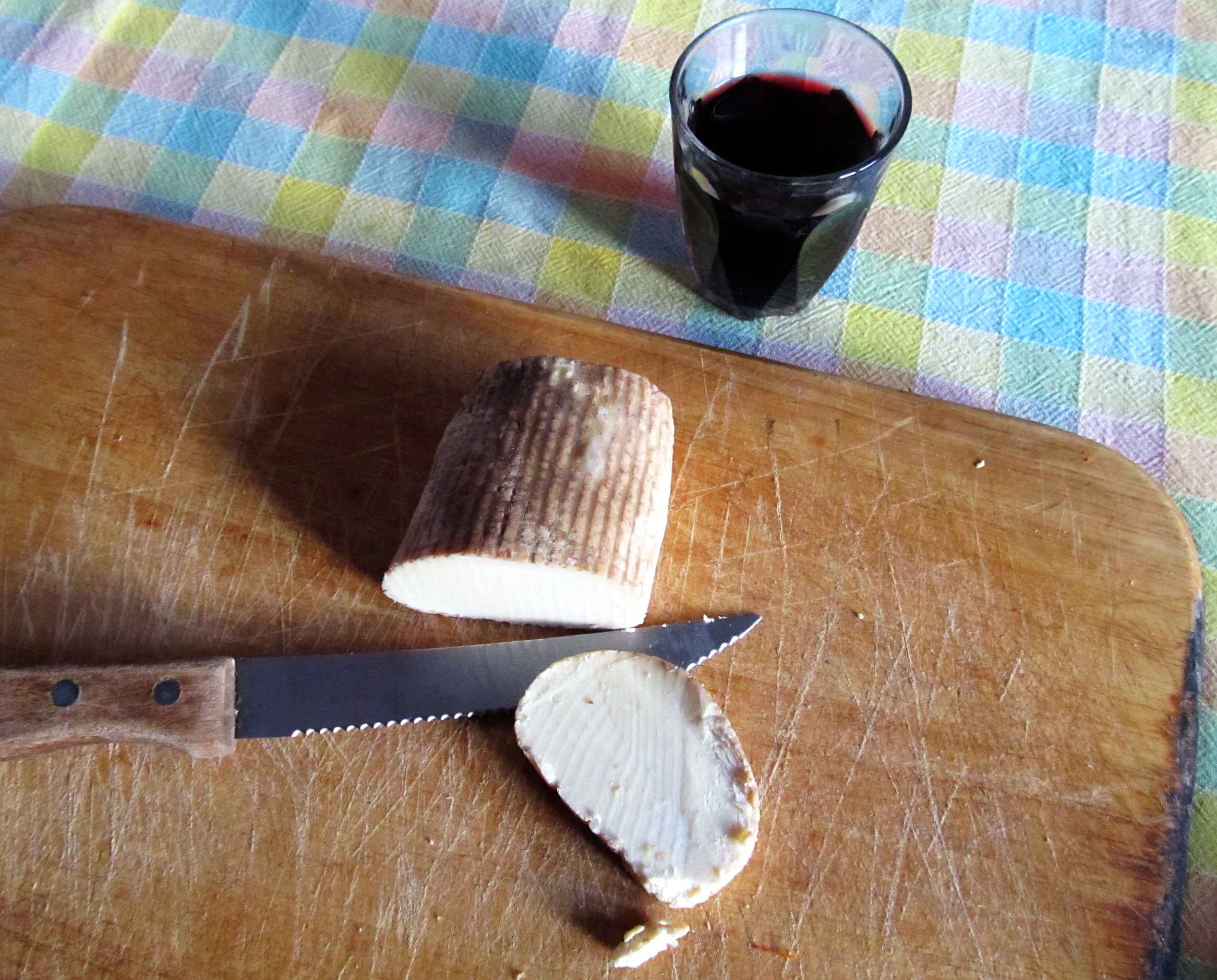|
Pule Cheese
Pule cheese or magareći sir, is a Serbian cheese made from 60% Balkan donkey milk and 40% goat's milk. The cheese is produced in Zasavica Nature Reserve, as conceived by Slobodan Simić, Zasavica Special Nature Reserve Manager and former Serbian MP. Pule is reportedly the "world's most expensive cheese", fetching US$1300 per kilogram. It is so expensive because of its difficulty to produce, and its rarity: there are only about 100 jennies in the landrace of Balkan donkeys that are milked for Pule-making and it takes of milk to create of cheese. See also * List of cheeses This is a list of cheeses by place of origin. Cheese is a milk-based food that is produced in wide-ranging flavors, textures, and forms. Hundreds of types of cheese from various countries are produced. Their styles, textures and flavors dep ... * List of smoked foods * References External links * {{DEFAULTSORT:Pule cheese Donkeys Serbian cuisine Serbian cheeses Smoked cheeses Cheeses b ... [...More Info...] [...Related Items...] OR: [Wikipedia] [Google] [Baidu] |
Sremska Mitrovica
Sremska Mitrovica (; sr-Cyrl, Сремска Митровица, hu, Szávaszentdemeter, la, Sirmium) is a city and the administrative center of the Srem District in the autonomous province of Vojvodina, Serbia. It is situated on the left bank of the Sava river. , the city has a total population of 37,751 inhabitants, while its administrative area has a population of 79,940 inhabitants. As Sirmium, it was a capital of the Roman Empire during the Tetrarchy of 4th century CE. Ten Roman emperors were born in or near this city, Emperors Herennius Etruscus (251), Hostilian (251), Decius Traian (249–251), Claudius Gothicus (268–270), Quintillus (270), Aurelian (270–275), Probus (276–282), Maximian (285–310), Constantius II (337–361) and Gratian (367–383). Name The modern town name is ''Sremska Mitrovica'' ( sr, Сремска Митровица). The Hungarian name was ''Szávaszentdemeter'' while in Croatian it is referred to as ''Srijemska Mitrovica''. Mitrov ... [...More Info...] [...Related Items...] OR: [Wikipedia] [Google] [Baidu] |
Balkan Donkey
The Balkan donkey or mountain donkey, sr, Domaći balkanski magarac, is a breed or group of breeds of domestic donkey originating in the Balkan region. It is reported from Serbia and Montenegro. A herd of about 120 Balkan donkeys in the Zasavica Reserve, Sremska Mitrovica, Serbia, are used to make the world's most expensive cheese, pule cheese Pule cheese or magareći sir, is a Serbian cheese made from 60% Balkan donkey milk and 40% goat's milk. The cheese is produced in Zasavica Nature Reserve, as conceived by Slobodan Simić, Zasavica Special Nature Reserve Manager and former Serbia .... References Donkey breeds {{oddtoedungulate-stub ... [...More Info...] [...Related Items...] OR: [Wikipedia] [Google] [Baidu] |
Member Of Parliament
A member of parliament (MP) is the representative in parliament of the people who live in their electoral district. In many countries with bicameral parliaments, this term refers only to members of the lower house since upper house members often have a different title. The terms congressman/congresswoman or deputy are equivalent terms used in other jurisdictions. The term parliamentarian is also sometimes used for members of parliament, but this may also be used to refer to unelected government officials with specific roles in a parliament and other expert advisers on parliamentary procedure such as the Senate Parliamentarian in the United States. The term is also used to the characteristic of performing the duties of a member of a legislature, for example: "The two party leaders often disagreed on issues, but both were excellent parliamentarians and cooperated to get many good things done." Members of parliament typically form parliamentary groups, sometimes called caucuse ... [...More Info...] [...Related Items...] OR: [Wikipedia] [Google] [Baidu] |
Jenny (donkey)
The domestic donkey is a hoofed mammal in the family Equidae, the same family as the horse. It derives from the African wild ass, ''Equus africanus'', and may be classified either as a subspecies thereof, ''Equus africanus asinus'', or as a separate species, ''Equus asinus''. It was domesticated in Africa some years ago, and has been used mainly as a working animal since that time. There are more than 40 million donkeys in the world, mostly in underdeveloped countries, where they are used principally as draught or pack animals. While working donkeys are often associated with those living at or below subsistence, small numbers of donkeys or asses are kept for breeding or as pets in developed countries. A male donkey is known as a ''jack'' or ''jackass'', a female is a ''jenny'' or ''jennet'', and an immature donkey of either sex is a ''foal''. Jacks are often mated with female horses (mares) to produce '' mules''; the less common hybrid of a male horse (stallion) and je ... [...More Info...] [...Related Items...] OR: [Wikipedia] [Google] [Baidu] |
Landrace
A landrace is a domesticated, locally adapted, often traditional variety of a species of animal or plant that has developed over time, through adaptation to its natural and cultural environment of agriculture and pastoralism, and due to isolation from other populations of the species. Landraces are distinct from cultivars and from standard breeds. A significant proportion of farmers around the world grow landrace crops., and most plant landraces are associated with traditional agricultural systems. Landraces of many crops have probably been grown for millennia. Increasing reliance upon modern plant cultivars that are bred to be uniform has led to a reduction in biodiversity, because most of the genetic diversity of domesticated plant species lies in landraces and other traditionally used varieties. Some farmers using scientifically improved varieties also continue to raise landraces for agronomic reasons that include: better adaptation to the local environment, lower fertilizer r ... [...More Info...] [...Related Items...] OR: [Wikipedia] [Google] [Baidu] |
List Of Cheeses
This is a list of cheeses by place of origin. Cheese is a milk-based food that is produced in wide-ranging flavors, textures, and forms. Hundreds of types of cheese from various countries are produced. Their styles, textures and flavors depend on the origin of the milk (including the animal's diet), whether they have been pasteurized, the butterfat content, the bacteria and mold, the processing, and aging. Herbs, spices, or wood smoke may be used as flavoring agents. The yellow to red color of many cheeses, such as Red Leicester, is normally formed from adding annatto. While most current varieties of cheese may be traced to a particular locale, or culture, within a single country, some have a more diffuse origin, and cannot be considered to have originated in a particular place, but are associated with a whole region, such as queso blanco in Latin America. Cheese is an ancient food whose origins predate recorded history. There is no conclusive evidence indicating where che ... [...More Info...] [...Related Items...] OR: [Wikipedia] [Google] [Baidu] |
List Of Smoked Foods
This is a list of smoked foods. Smoking is the process of flavoring, cooking, or preserving food by exposing it to smoke from burning or smoldering material, most often wood. Foods have been smoked by humans throughout history. Meats and fish are the most common smoked foods, though cheeses, vegetables, and ingredients used to make beverages such as whisky, smoked beer, and ''lapsang souchong'' tea are also smoked. Smoked beverages are also included in this list. Smoked foods Beverages * Lapsang souchong a kind of tea. * Mattha - an Indian buttermilk or yogurt drink that is sometimes smoked * Smoked beer – beer with a distinctive smoke flavor imparted by using malted barley dried over an open flame''Beer'', by Michael Jackson, published 1998, pp.150-151 ** Grätzer * Suanmeitang - a Chinese smoked plum drink * Scotch Whisky Some scotch is made from grains that have been smoked over a peat fire. File:JacksonsLapsangSouchong low.jpg, Lapsang souchong tea leaves. Lapsang sou ... [...More Info...] [...Related Items...] OR: [Wikipedia] [Google] [Baidu] |
Donkeys
The domestic donkey is a hoofed mammal in the family Equidae, the same family as the horse. It derives from the African wild ass, ''Equus africanus'', and may be classified either as a subspecies thereof, ''Equus africanus asinus'', or as a separate species, ''Equus asinus''. It was domesticated in Africa some years ago, and has been used mainly as a working animal since that time. There are more than 40 million donkeys in the world, mostly in underdeveloped countries, where they are used principally as draught or pack animals. While working donkeys are often associated with those living at or below subsistence, small numbers of donkeys or asses are kept for breeding or as pets in developed countries. A male donkey is known as a ''jack'' or ''jackass'', a female is a ''jenny'' or ''jennet'', and an immature donkey of either sex is a ''foal''. Jacks are often mated with female horses (mares) to produce '' mules''; the less common hybrid of a male horse (stallion) and je ... [...More Info...] [...Related Items...] OR: [Wikipedia] [Google] [Baidu] |
Serbian Cuisine
Serbian cuisine ( sr, српска кухиња / srpska kuhinja) is a Balkan cuisine that consists of the culinary methods and traditions of Serbia. Its roots lie in History of Serbia, Serbian history, including centuries of cultural contact and influence with the Greeks and the Byzantine Empire, the Ottoman Empire, Ottomans, and Serbia's Balkans, Balkan neighbours, especially during the existence of Yugoslavia. Historically, Serbian food develops from pastoral customs that involved the keeping of sheep in mountain highlands, in a climate and regional context that favoured animal husbandry over vegetable farming; Serbian food is therefore traditionally richer in animal products and basic grains - corn, wheat and oats, than fresh vegetable dishes. Following the abandon of widely practiced pastoral lifestyles, Serbian food emerges through the middle ages heavily dependant not on lamb or mutton, but on the keeping of pigs for the annual cull and the production of various cured meats ... [...More Info...] [...Related Items...] OR: [Wikipedia] [Google] [Baidu] |
Serbian Cheeses
There are several regional types of Serbian cheeses, such as the Sjenica, Zlatar, Svrljig and Homolje cheeses. Types *Cer cheese (''cerski sir''), made from goat milk, produced in the Cer mountain region *Homolje cheese (''homoljski sir''), white brined cheese, from cow, goat or sheep milk, produced in the Homolje valley and mountains *Krivi Vir caciocavallo (''krivovirski kačkavalj''), yellow hard cheese, from sheep, cow and goat milk, produced in the Zaječar region, named after Krivi Vir *Mokrin cheese (''mokrinski sir''), white brined cheese, named after Mokrin *Pirot caciocavallo (''pirotski kačkavalj''), hard cheese, produced in the Pirot region *Pule cheese (''pule''), smoked cheese, made from donkey milk, produced in Zasavica, world's most expensive cheese * Šar cheese (''šarski sir''), hard cheese, produced in Gora, Opolje and Štrpce (in Kosovo), named after Šar Mountains *Sjenica cheese (''sjenički sir''), white brined cheese, from sheep milk (traditionally) ... [...More Info...] [...Related Items...] OR: [Wikipedia] [Google] [Baidu] |
Smoked Cheeses
Smoked cheese is any cheese that has been specially treated by smoke-curing. It typically has a yellowish-brown outer pellicle which is a result of this curing process. Process Smoke-curing is typically done in one of two ways: cold-smoking and hot-smoking. The cold-smoking method (which can take up to a month, depending on the food) smokes the food at between 20° to 30° C (68° to 86° F). Hot-smoking partially or completely cooks the food by treating it at temperatures ranging from 40° to 90 °C (104° to 194° F). Another method, typically used in less expensive cheeses, is to use artificial smoke flavoring to give the cheese a smoky flavoring and food coloring to give the outside the appearance of having been smoked in the more traditional manner. Common smoked cheeses Some smoked cheeses commonly produced and sold include smoked Gruyère, smoked Gouda (rookkaas), Provolone, Rauchkäse, Scamorza, Sulguni, Oscypek, Fynsk rygeost, and smoked Cheddar. Gallery Im ... [...More Info...] [...Related Items...] OR: [Wikipedia] [Google] [Baidu] |









